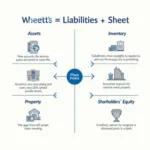If you’re aiming to ace the TOEIC test, it’s essential to combine both theory and practical exercises. The TOEIC exam includes several sections designed to evaluate your listening and reading skills, and with the right approach, you can maximize your score. This article will guide you through specific tips and techniques on how to improve quickly, focusing on practical exercises that target each TOEIC section efficiently.
Understanding the TOEIC Structure
Before diving into exercises, you must familiarize yourself with the TOEIC exam structure. The TOEIC test consists of two main sections:
| Section | Time Limit | Number of Questions | Skills Tested |
|---|---|---|---|
| Listening | 45 minutes | 100 questions | Comprehension of spoken English |
| Reading | 75 minutes | 100 questions | Comprehension of written English |
Let’s now explore how to conquer these sections with effective exercises.
Practical Exercises for the Listening Section
The TOEIC listening section evaluates how well you can understand English in different contexts. It consists of 100 questions divided across four parts: photographs, questions/responses, conversations, and talks.
Part 1: Photographs
This part tests your ability to describe and interpret images.
Exercise:
- Look for random pictures online in busy places like airports, cafes, or offices. Describe (in English) what is happening in each image. Focus on using present continuous tense for actions.
Expert Tip: “The more diverse the images you practice with, the higher your ability to interpret various possible scenarios during the exam.” – Nguyen Thanh An, TOEIC specialist with 10 years of teaching experience.
Part 2: Questions and Responses
In this part, you will hear short questions and three possible responses.
Exercise:
- Play recordings of simple questions (or have a friend ask) and practice responding quickly within 5 seconds. Sites like BBC Learning English offer great examples.
Tip: Focus on keywords, as distracting options might sound correct but don’t align with the question.
Part 3 and Part 4: Conversations and Talks
These parts are longer and more complex. You need to be able to listen for details and main ideas.
Exercise:
- Watch English news clips or podcasts without subtitles and take notes on the main topic, key points, and any numbers/dates mentioned.
For more advice on handling such audio comprehensions under time pressure, check out step by step TOEIC tips without stress, ensuring you’re well-prepared.
Practical Approaches for the Reading Section
The TOEIC reading section assesses your ability to grasp texts such as emails, advertisements, and articles.
Part 5: Incomplete Sentences
This part tests your grammar and vocabulary knowledge.
Exercise:
- Practice sentence completion drills. Focus on common tense and preposition errors.
For example:
Original: John ____ to the store yesterday.
Options: (A) go (B) went (C) going (D) gone
Answer: (B) went
Part 6: Text Completion
Here, you’ll read partially completed texts requiring you to choose the right words to fill gaps.
Exercise:
- Study business correspondence—emails, memos, and announcements. Highlight words that signal specific grammar structures (verbs for actions, nouns for jobs, etc.).
To cover even more ground in a short timeframe, consider reading our guide on how to prepare for TOEIC reading in a short time.
Part 7: Reading Comprehension
This section includes multiple passages that test how well you understand the content, context, and intention of the text.
Exercise:
- Read online news articles, focusing on fast comprehension. Time yourself to understand how much information you can get within 3 minutes per article.
For extra practice, try scanning techniques: Look for sections of the passage that contain dates, times, or names, which are common questions in the TOEIC reading section.
Efficient Test-Taking Strategies
Combining practical exercises with strong strategies makes a huge difference. Below are some key strategies that could expedite your learning process:
- Time management: Allocate your time wisely. Don’t spend more than 40 seconds on each question in the reading section.
- Eliminate wrong answers: Narrow your answers by discarding obviously incorrect choices, even if you’re unsure of the right one.
- Practice target listening: When listening to conversations or talks, don’t try to understand every word. Prioritize keywords that answer the questions.
For more time-efficient tips, consider reading how to conquer TOEIC in a short time.
How Can I Improve My TOEIC Score Quickly?
Many learners may ask how to speed up their TOEIC preparation. The secret lies not just in studying relentlessly, but in studying smartly:
- Set daily goals: Dedicate at least 1 hour per day to practice.
- Use mock tests: Complete at least 2 full mock tests each week to condition yourself to the test format.
- Review consistently: Revisit mistakes and work on explaining why the correct answer is what it is.
- Expand vocabulary: Use specific apps like Quizlet or Anki for TOEIC-focused vocabulary lists.
Expert Tip: “Consistent practice with a focus on quality over quantity guarantees improvement. Structure your learning into achievable chunks.” – Le Minh Triet, TOEIC Tutor
To further enhance your prep without any extra tutor help, explore how to enhance TOEIC without a tutor.
Conclusion
To truly ace the TOEIC test, it’s vital to approach your studies with practical exercises that simulate the real exam. By breaking down the TOEIC sections, addressing potential stumbling blocks, and applying the right study techniques, you can ensure that your scoring potential is maximized in both the Listening and Reading components.
Start incorporating these detailed strategies today and you’ll be well on your way to achieving a high score and ultimate success in your TOEIC journey.
FAQs about mastering TOEIC
Q1: How long should I prepare before taking the TOEIC?
A1: Generally, preparation ranges from 2 to 3 months for most learners. However, if you’re targeting higher scores, you may want to extend this period.
Q2: What if I don’t understand a word during the listening section?
A2: Focus on the context! Often, the surrounding information provides enough clues to make an educated guess, even if you miss a few words.
Q3: How do I improve my time management in the reading section?
A3: Practice skimming and scanning techniques—these allow you to find key information faster, leaving you more time for difficult questions.
Q4: Are TOEIC practice tests helpful?
A4: Absolutely. They mimic the actual test format and help you get used to pacing, question types, and stamina.
Q5: Should I focus more on Listening or Reading?
A5: It depends on your current level. Ideally, you should balance both sections unless you’re significantly weaker in one area.




